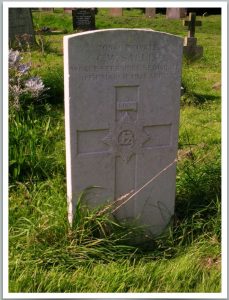Worcestershire Regiment

Charles William Sallis was born in Dumbleton, Gloucestershire on 6 June 1888 and was the son of Samuel Thomas Jonas Sallis and his wife Harriet Louisa (née Wills).
The couple had six children, equally divided between boys and girls.
Samuel died in 1916, aged 63 and Harriet in 1915, aged 65. One of the boys (Samuel Joseph, born 1886) also died in 1914 but was not a casualty of war.
According to the 1911 Census, Charles Sallis was a farm labourer. He does not appear to have married and following his death probate was granted to Clara Jayne Taylor, wife of Joseph Taylor and their relationship with Charles is unknown.
Unfortunately no service or pension records have survived for Charles. Evidence from his Medal Index Card and the Medal Index Rolls held at the National Archives and the fact that he was awarded a Sliver War Badge (SWB), does give us a number of clues.
The medal records indicate that he served, initially with the 14th (Service) Battalion (Severn Valley Pioneers) of the Worcestershire Regiment and was posted to France on 20 June 1916, before moving to the 2nd Battalion (part of 100 Brigade, 33 Division) and following that the 4th Battalion (8 Brigade, 29 Division).
His SWB record states that he served from 1 March 1916 to 24 April 1918, when he was discharged due to wounds. According to his Pension Record Card (made available via the Ancestry website in late 2018) his left leg had been amputated and he consequently received a 60% disability pension for life, from 19 March 1918.
This amounted to 19 shillings and three pence (£0.96).
Possibly he was wounded more than once during his service and on each occasion was posted back to a different battalion.
In late 1917 the 4th Battalion was in the line in the Ypres Salient and in early 1918 in the Lys area.
His CWGC record shows him being with the Depot of the Worcestershire Regiment but this would mean he was on the Regimental strength but not assigned to a battalion pending discharge on 24 April 1918.
He could well have been wounded in late 1917 or early 1918 and was discharged, once it was evident that he was no longer fit for military service.
What happened to him after that is not known, except that his probate recorded stated him to be a farm labourer.
He appears to have died in Dumbleton on 10 March 1921, aged 32, and was buried in the parish churchyard two days later.
A CWGC headstone now marks his grave.
Research by Graham Adams 23 January 2019 (revised)
